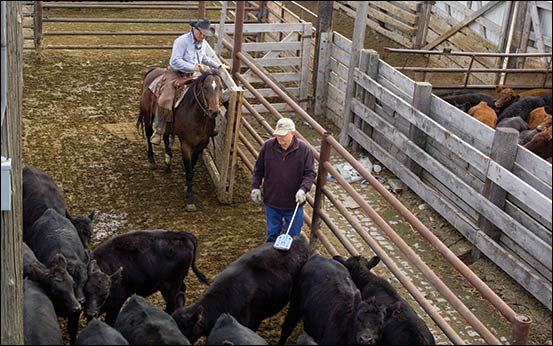
Fatigued Cattle Syndrome
Stress, biological stresses and beta-agonist use contribute to FCS.
Mobility of cattle at slaughter facilities got a lot of attention in the summer of 2013, and two heat events provided some anecdotal evidence against the use of beta-agonists like Zilmax® and Optaflexx®. In the two events, cattle showed a reluctance to move, and some even sloughed hoof walls. Seventeen cattle were euthanized. It brought animal welfare issues to the forefront of summer handling, and the syndrome was termed fatigued cattle syndrome (FCS). Jacob Hagenmeier, veterinarian and doctoral student at the Kansas State University College of Veterinary Medicine, explained that these cattle exhibited elevated levels of lactate and creatine kinase (CK), which signify muscle damage.

Jacob Hagenmeier says fatiqued cattle syndrome is caused by multiple factors.
Hagenmeier spoke to attendees of the fifth International Symposium on Beef Cattle Welfare (ISBCW) in Manhattan, Kan., June 8-10.
He shared that the pork industry had a similar event 20 years before in which a higher incidence of transport losses occurred. It was called fatigued pig syndrome and was most prevalent among heavily muscled hogs that were reluctant to move with increased levels of lactate and CK. Several studies found that extreme muscling and heavy body weights, aggressive handling, long distances traveled, and high doses of beta-agonists fed all contributed to the issue.
FCS is also caused by multiple factors, including beta-agonist use, aggressive handling, increased live weights at slaughter (having increased by 150 pounds in the last 15 years), heat stress, and distance traveled — both within larger feedyards to the trailer and while on the truck, he explained.
Hagenmeier shared several studies on the effects of cattle handling and beta-agonist use. He reported that aggressive handling, which in this case was running cattle from their feedyard pen to the load-out pens, caused acute metabolic acidosis in both cattle fed beta-agonists and those not fed beta-agonists. The stressful handling did not affect carcass characteristics, but was detrimental to normal physiological function. It is important to remember that cattle are not athletes; adding that cattle have 30% the capacity of equine lungs but 250% of the requirements.
He suggested staging heavy cattle near load-out facilities and continually acclimating cattle to handling, even after arrival at the feedyard. When a pen rider rode in front of the cattle to encourage movement, the cattle moved quietly. Avoid shipping cattle during extreme heat loads, and be cognizant of the temperature-humidity index when handling cattle. Additionally, when weighing out cattle, weigh them in smaller groups to reduce stress.
Watch for additional coverage of the 2016 ISBCW on www.angus.media and in the Angus Journal and Angus Beef Bulletin. Comprehensive meeting coverage will be archived at www.api-virtuallibrary.com/meetings_other_news.html.







